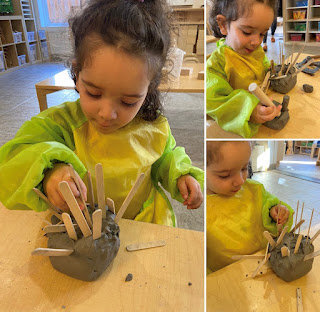I've been observing toddler play for a lifetime but in the last year, spending one on one time with my grandson and watching him integrate into a toddler classroom has turned my attention to a new concept, crowding and how it affects learning.
We all know that children scaffold learning, think through problems, question, challenge themselves and push boundaries. Just as we know that social contexts can support these skills. However they can also hinder them.
Toddlers by nature want what other children have. The age of mine.
They flock around other children who have what they want and this is where the problem of crowding begins.
When I work one on one with my grandson, the development of his skills are observable as he challenges himself in his play.
When he entered the toddler classroom the playing field changed. His work is often interrupted as children topple his structures, step on his ramps, or try to grab his toys. This is not conducive to constructing knowledge.
The challenge here lies in how to mitigate crowding, yet still encourage social play.
The key rests in the role of the teacher, as she must be on point in creating an environment that allows for rich experiences that keep children engaged in small clusters and supports individual work.
Working alone is not taboo. In fact, it is important to allow children to negotiate learning on their own as well as with peers.
There is a time and place for it all.



